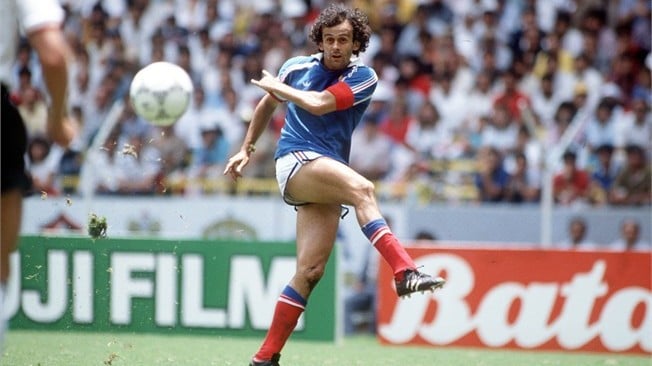
The Good Old Days of Michel Platini (1986 World Cup in Mexico)
Astronomical amounts of money are being spent on soccer (football) transfers. These days, no one is shocked at news of multi-million dollar signings.
When he was the president of the Union of European Football Associations (UEFA), Michel Platini stood by his view that the record €94 million which Real Madrid paid to sign Cristiano Ronaldo was “a serious challenge to the idea of fair play.” “Players are not free and they don’t even belong to clubs… they belong to financial holdings, companies, or people,” describing transfer amounts in a media conference a “form of robbery.”
Current transfer fees definitely dwarf those of older generations. In 1938, when Bryn Jones left Wolverhampton Wanderers for £14,000 (about £7 million in today’s money), politicians were outraged by the money spent and the subject was debated in the House of Commons.
Sports like soccer can be seen as miniature economies.Europe is considered the largest transfer market in the world: it has the most successful, well-known clubs and the best players are attracted to its national leagues. Its transfer environment is subject to different layers of rules and regulations established by sports governing bodies. Yet, ever since oil money arrived in the soccer world, the game has gone money mad. Following Paul Pogba’s reported world record transfer from Juventus to Manchester United for US$115.90 million on August 2nd, it is worthwhile to get a feel for soccer inflation with relation to the evolution of world record transfers since 1893.
Speaking of soccer inflation, have you ever wondered how much, for instance, David Beckham’s 2003 move to Real Madrid would cost in modern-day cash? When the transfer was unveiled, the global superstar described the €35.9 million move as a “dream.” In today’s money, adjusted for inflation, it is more than €43 million. Take another example: Cristiano Ronaldo’s €94 million move in 2009 would be of an adjusted fee of €102.4 million. The Bleacher Report has compiled a list of the top hundred most expensive transfers in history with inflation in mind.
I wonder how much a legend like Diego Maradona would cost in modern day soccer. Maradona was bought by Napoli from Barcelona for US$6.5 million in 1984, which is the equivalent of the Italian side paying him almost US$19.5 million today. Comparing Maradona’s adjusted fees with those of the other super-stars of today proves that soccer inflation is running wild. And taking into account the inflationary trend of transfer fees, we will not be surprised to see signings approaching US$250 million, or even more, in the coming decades.
It is also interesting to look more closely at how this transfer expenditure is spread throughout the big five league clubs which shows that a process of concentration of investments is taking place. While clubs that invested the most in transfer fees are logically among the wealthiest (Real Madrid, Barcelona, Manchester United, Manchester City, Chelsea, and Paris St-Germain), teams having benefited from the ten most expensive football transfers in history of soccer also belong to the small circle of financially dominant teams.
This reinforces the increasing correlation between financial resources available and results, meaning that European soccer suffers from an important economic polarization: a limited number of clubs (those with the largest incomes and/or supported by economically powerful investors) makes the most important part of transfer expenditures.
Unlike the traditional way of thinking, the soccer industry is not simply a market of pure and perfect competition. In essence, Europe is slowly embracing a system of closed leagues (at the elite level) which is also reflected in the results of UEFA competitions year after year. We should consequently consider amendments to the regulatory framework governing transfers to achieve the policy objectives of a fair play, notably with regard to contract stability, which shall have a positive effect to fight against soccer inflation.
Analyzing the workings of competition within well-defined rules (just as we see in our economy) would also make it easier to effectively combat speculation and third-parties’ involvement in soccer in so far as the sums of all transfer payments must be spread over the entire chain of clubs having contributed to the sporting development of players.
The bottom line is: rather than merely looking at soccer transfers as monetary figures, UEFA and the national governing bodies should start studying any possible factors behind the existence of monopolistic structures in the soccer industry, both at the local and continental levels.